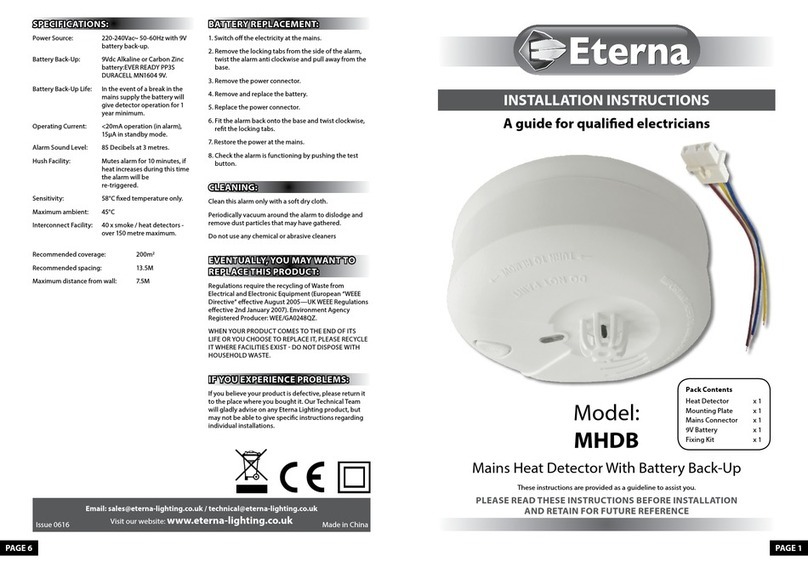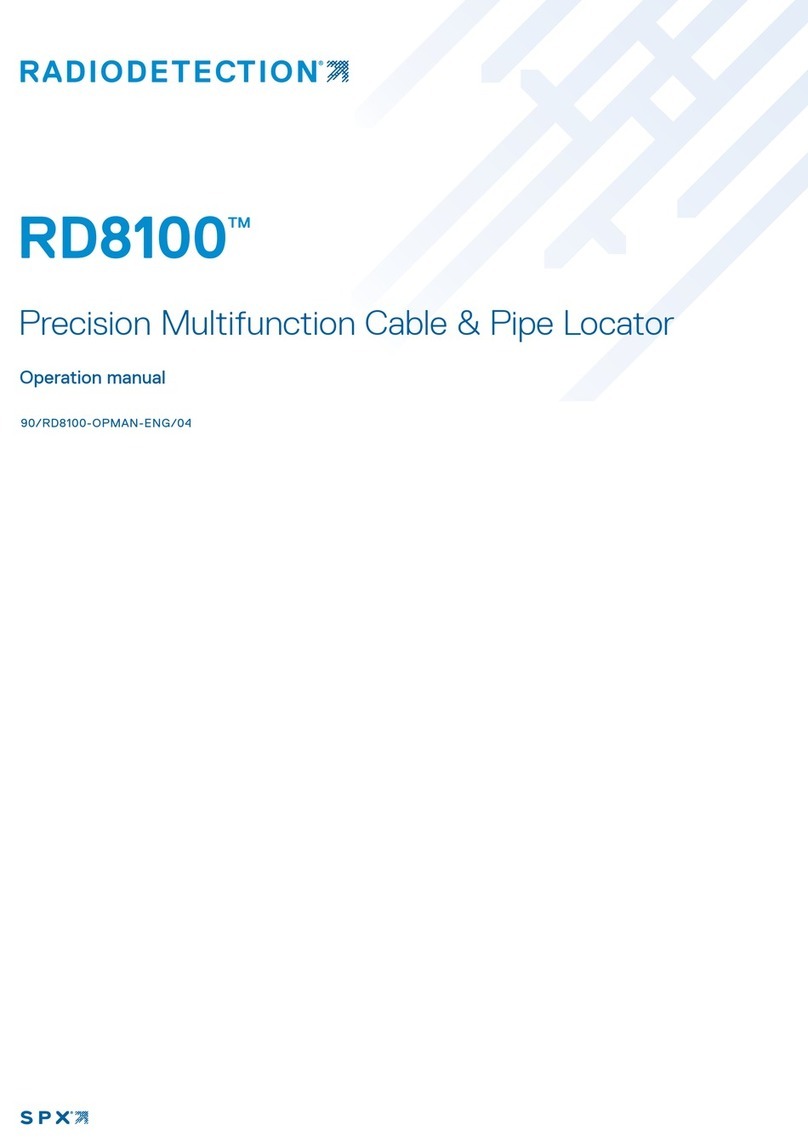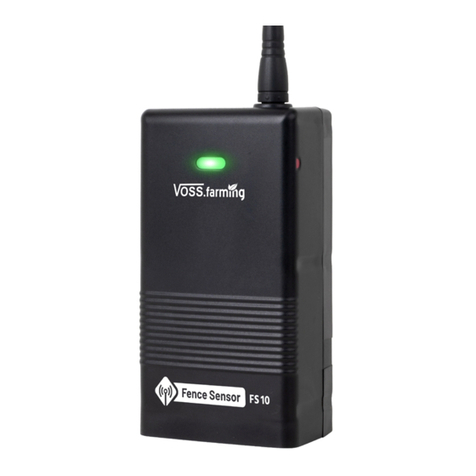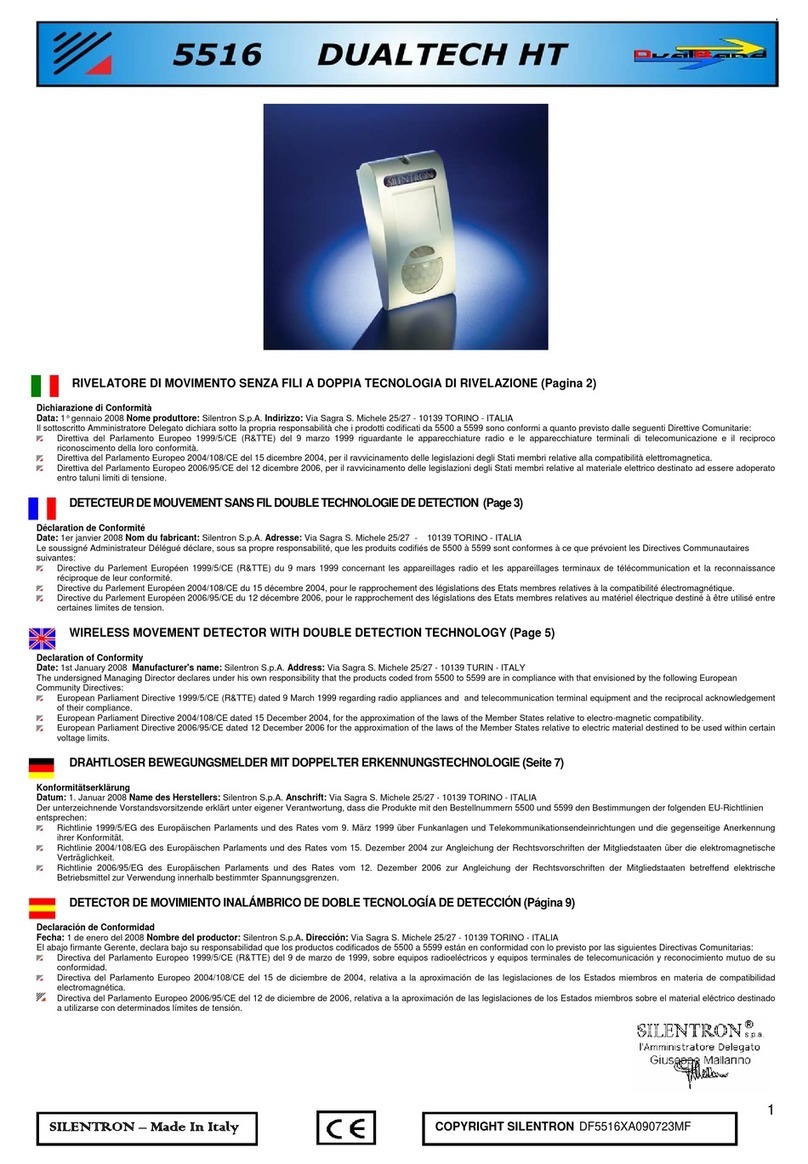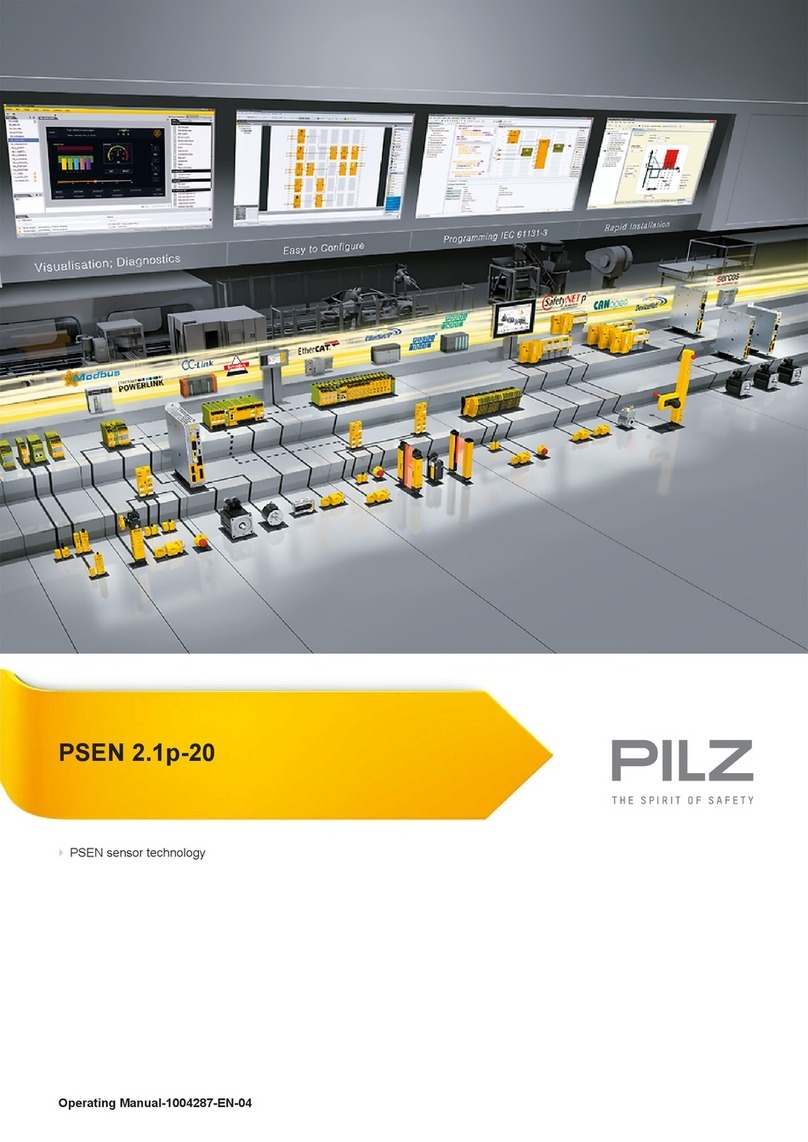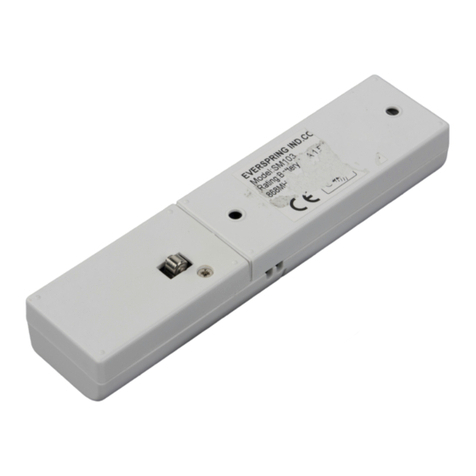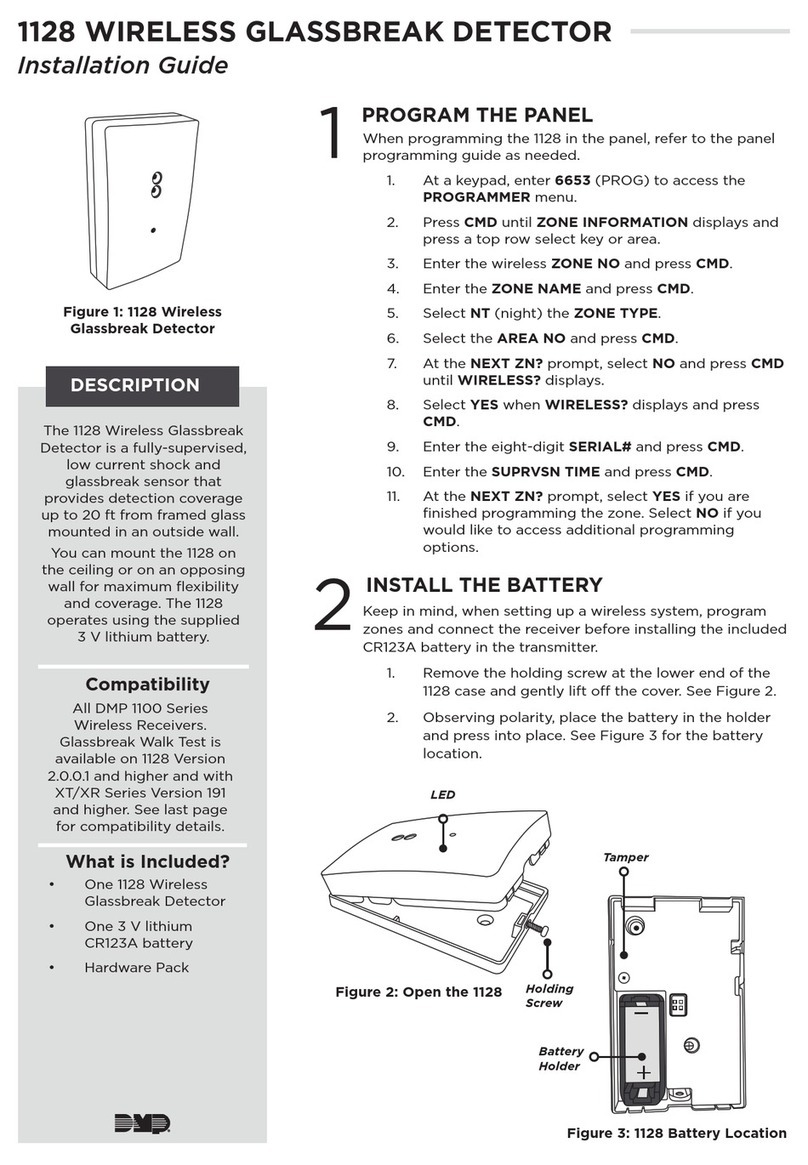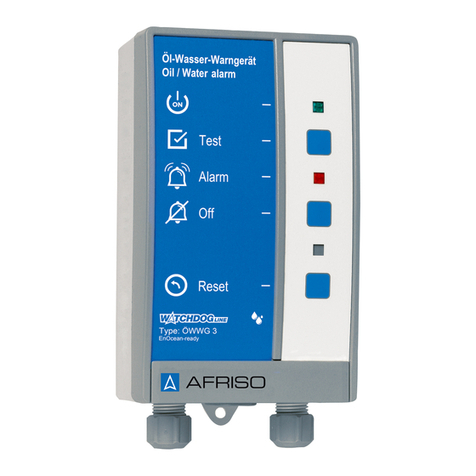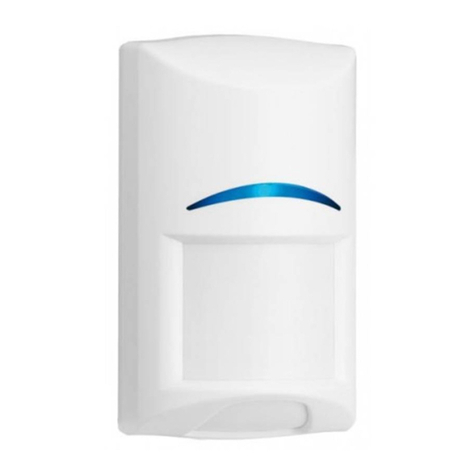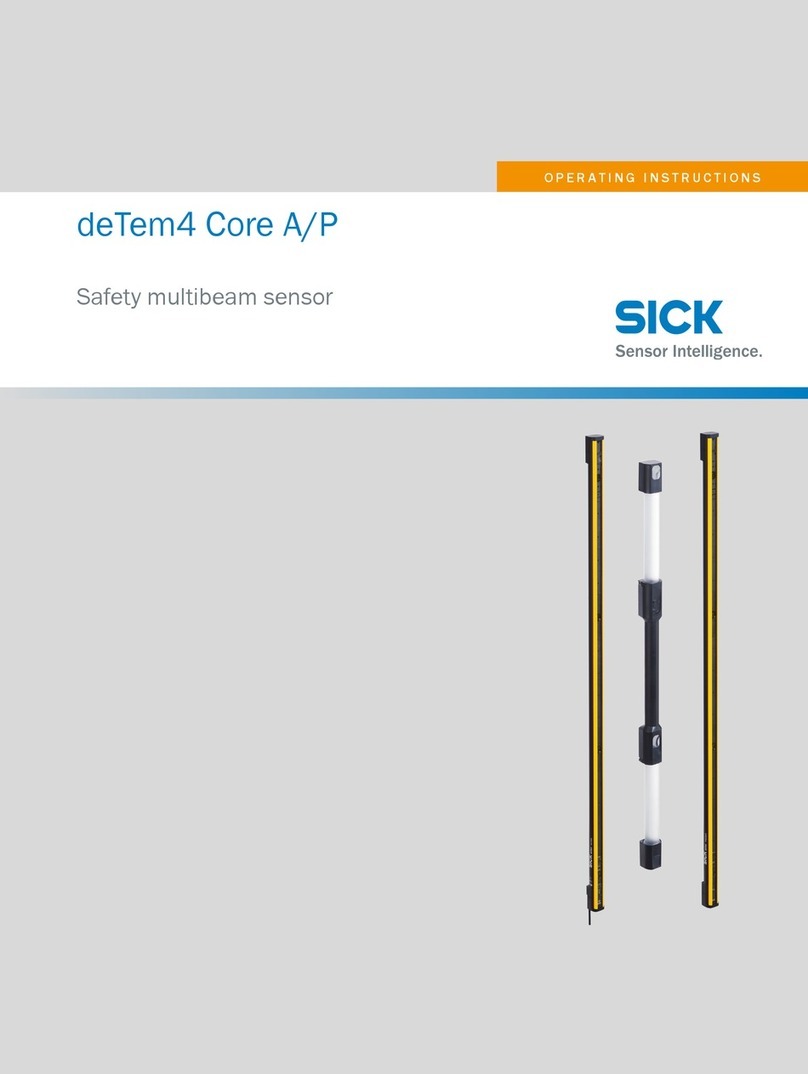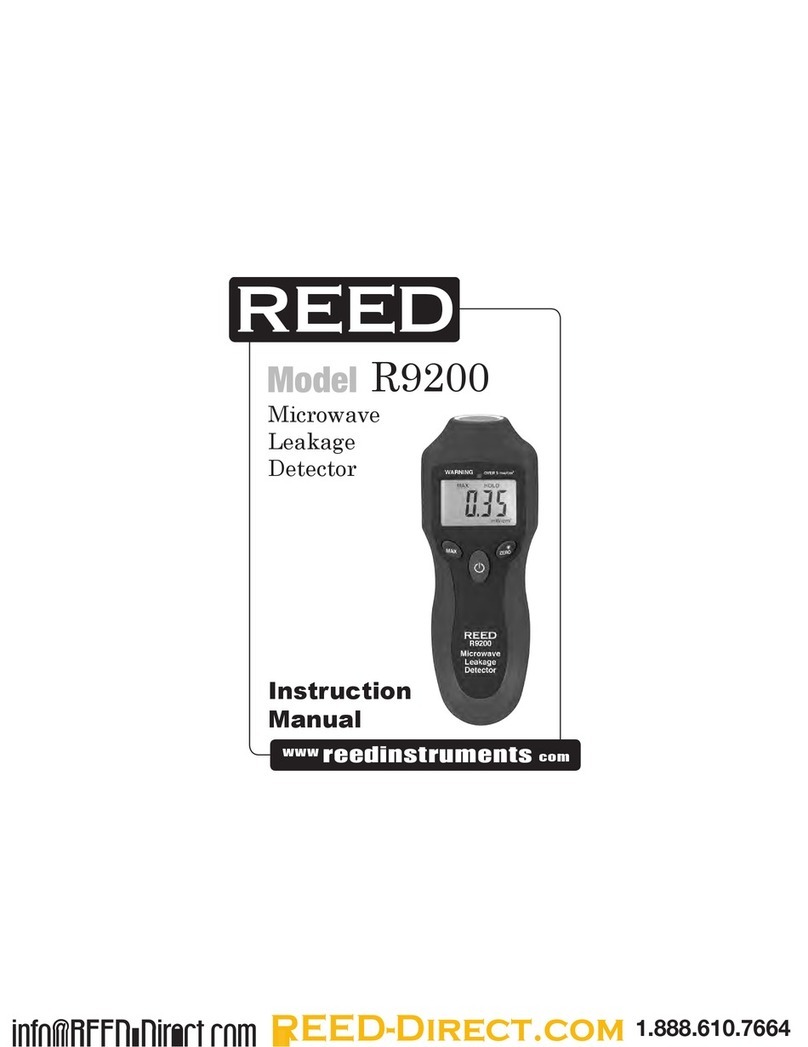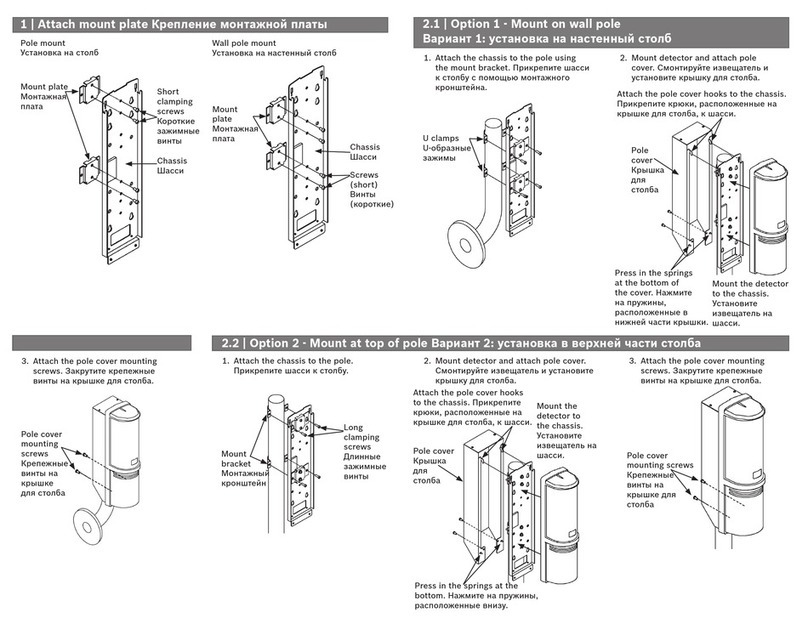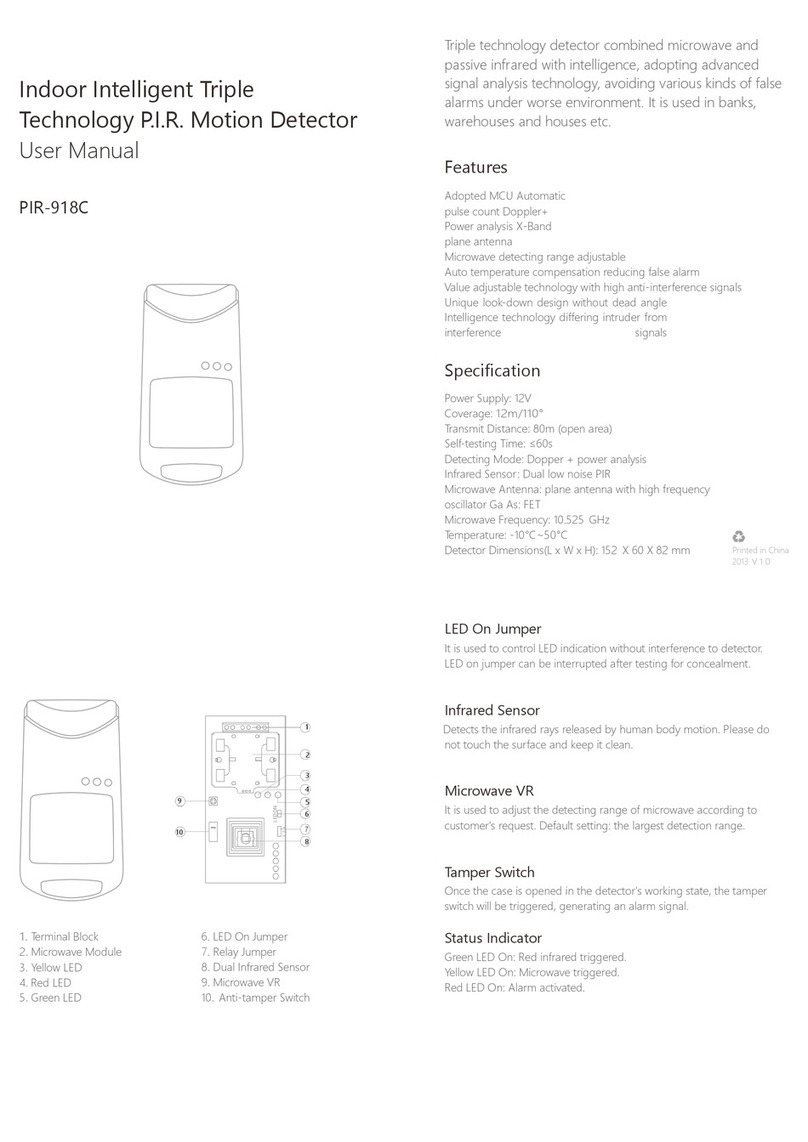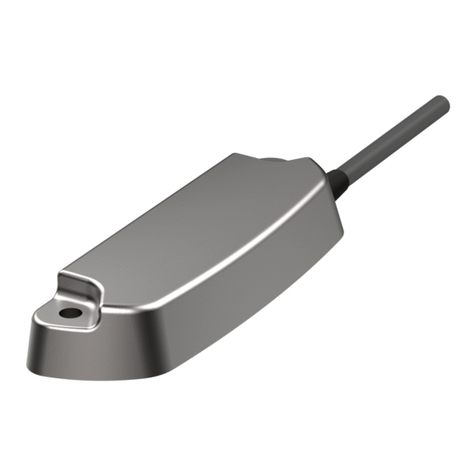General Monitors TL104 User manual

Model TL104
Test Lamp for Flame Detection
The information and technical data disclosed in
this document may be used and disseminated
only for the purposes and to the extent
specifically authorized in writing by General
Monitors.
Instruction Manual 10-05
General Monitors reserves the right to change
published specifications and designs without
prior notice.
MANTL104
Part No. MANTL104
Revision B/10-05

TL104
This page is intentionally left blank.
ii

TL104
Table of Contents
ABOUT THIS MANUAL ..............................................................................................................IV
Format Conventions...............................................................................................................................iv
Notes, Cautions, and Warnings................................................................................................iv
Contacting Customer Support...................................................................................................iv
1.0 INTRODUCTION ....................................................................................................................1
1.1 Notice.........................................................................................................................................1
1.2 Special Warning.........................................................................................................................1
1.3 Description.................................................................................................................................1
1.4 Test Lamp Operating Principle ..................................................................................................1
2.0 TEST LAMP COMPONENTS.................................................................................................2
2.1 Lamp Housing Assembly...........................................................................................................2
2.2 Microcontroller............................................................................................................................2
2.3 Solid State Relay........................................................................................................................2
2.4 Dip Switch and Setting...............................................................................................................2
2.5 Mode Jumper and Settings........................................................................................................2
2.6 Lead Acid Rechargeable Battery...............................................................................................3
2.7 Recharge Jack and Cap.............................................................................................................3
2.8 Test Lamp Momentary Contact Button......................................................................................3
2.9 Red Aluminum Case and Gray Cap...........................................................................................3
3.0 USE AND OPERATION .........................................................................................................4
4.0 TEST LAMP MAINTENANCE AND WARRANTY .................................................................6
4.1 Maintenance...............................................................................................................................6
4.2 Warranty.....................................................................................................................................6
5.0 TROUBLESHOOTING GUIDE...............................................................................................7
6.0 CUSTOMER SUPPORT.........................................................................................................8
6.1 General Monitors’ Offices...........................................................................................................8
6.2 Other Sources of Help................................................................................................................8
7.0 APPENDIX..............................................................................................................................9
7.1 Specifications.............................................................................................................................9
iii

TL104
About This Manual
This manual provides instructions for operating, and maintaining the General Monitors (GM)
TL104 Test Lamp. The intended audience includes installation personnel, field service
technicians, and other technical staff involved in using a TL104.
Format Conventions
Several format conventions are used throughout this manual for Notes, Cautions, and
Warnings. These conventions are described below.
Notes, Cautions, and Warnings
NOTE: Notes provide supplementary details such as exception conditions, alternate methods
for a task, time saving tips, and references to related information.
CAUTION: These notices describe precautions to prevent hazardous conditions that may
damage the equipment.
WARNING: These notices describe precautions to prevent hazardous conditions that may
cause injury to people working with the equipment.
Contacting Customer Support
For additional product information not contained in this manual, please contact General
Monitors Customer Support. Refer to Section 6.0 for contact information.
iv

TL104
1.0 Introduction
1.1 Notice
All information contained in this instruction manual may be used only to set up and operate the
TL104 Test Lamp with flame detectors provided by General Monitors. The sale of the test lamp
does not license the user to reproduce GM drawings, or to utilize any information contained in
this manual without prior written permission.
The TL104 Test Lamp is easy to set up and operate. However, this manual should be read in
full, and the information contained herein understood, before attempting to operate the test
lamp in service.
1.2 Special Warning
WARNING: UV light is injurious to one’s vision. Do not stare into functioning lamp. Wear eye
protection of UV blocking glasses to prevent eye injury.
CAUTION: Do not attempt to recharge the TL104 in areas where combustible gases or
potential explosive gases are located.
1.3 Description
The TL104 is a battery operated rechargeable test lamp specifically designed to test General
Monitors’ UV, UV/IR and Digital Frequency IR flame detection systems. The test lamp provides
a high-energy, broadband radiation source that emits sufficient energy in both the ultraviolet
and infrared spectra to activate UV and/or IR detectors. To simulate the flickering of a fire, the
test lamp automatically flashes at various selectable rates.
The TL104 is designed for use in Class I, Division 1, 2, Groups C and D areas. The test lamp
functions on internal lead-acid batteries which, when fully charged, allows continuous operation
for 20 to 30 minutes. An internal circuit prevents operation when the battery is low.
1.4 Test Lamp Operating Principle
The test lamp can function in two modes, TL104 and TL103 mode.
The mode is set by a function jumper and can be changed at any time. When set in TL103
mode, the jumper makes the TL104 Test Lamp backwards compatible with older TL103 Test
Lamps. It also allows the triggering of alarm or test mode in many General Monitors’ detectors
including, the FL3XXX Series and also the UV/IR Type VI detectors. In TL103 mode,
configuring the dipswitch can consign the test lamp to a particular detector. In TL103 mode, the
dipswitch sets the flash timing for FL3XXX Series and also the UV/IR Type VI detectors.
In TL104 mode, the test lamp can function to trigger test mode in newer flame detectors, such
as, the FL4000. The TL104 mode has a higher flash rate than the TL103 mode. TL104 mode
flash rate is controlled by a microcontroller, which also monitors battery voltage and shuts off
the test lamp when the battery voltage is low.
1

TL104
2.0 Test Lamp Components
2.1 Lamp Housing Assembly
NOTE: Do not put fingerprints on the reflector or the lamp case, as this will reduce the
available radiation required by the individual detector.
The lamp housing assembly consists of a gold-plated parabolic reflector with the lamp affixed to
its center. The test lamp’s functional board can be accessed under the lamp housing.
2.2 Microcontroller
The TL104’s mode-flashing timing is controlled by a microcontroller. This device also monitors
battery voltage and shuts down the flash lamp output when the battery charge is low. The
microcontroller resides on the functional board.
2.3 Solid State Relay
The VN920 solid-state relay replaces the functions of the traditional electromechanical relay
and is silent. The TL104 Test Lamp is therefore silent during its operation, unlike the older
TL103 Test Lamp. The solid-state relay resides on the functional board.
2.4 Dip Switch and Setting
The four-position dipswitch is used to configure the test lamp in TL103 mode to function with
FL3XXX and UV/IR Type VI detectors. Positions of the dipswitch for each of these detectors
are noted in Table 1 and are available for reference in the TL104 nameplate. The dipswitch
resides on the functional board.
2.5 Mode Jumper and Settings
The mode jumper has two positions, one for TL104 mode and another for the TL103 mode.
TL104 mode features a higher flash rate and is the mode required for new flame detectors such
as the FL4000. Detectors FL3XXX and UV/IR Type VI detectors require the TL103 mode.
When the TL103 mode is selected, it is important to configure the dipswitch for the specific
detector to ensure proper operation (Section 2.4). For further reference see Table 1. The mode
jumper and settings reside on the functional board.
NOTE: The FL4000 detector will not respond to TL103 mode.
2

TL104
2.6 Lead Acid Rechargeable Battery
The TL104 Test Lamp is powered by a 120V, 2.5Ah lead acid rechargeable battery. It is
important to keep the test lamp docked with its battery charger when the test lamp is not being
used. This will increase the expected life of the lead acid battery and will always keep the test
lamp available for immediate use.
NOTE: The normal recharge time for the lead acid rechargeable battery is 14 hours.
2.7 Recharge Jack and Cap
The recharge jack is located directly under the aluminum single slotted cap and can be
accessed when the aluminum cap is removed. The battery charger is connected to the
recharge jack. When this is done and the battery charger is connected to 120 AC power line,
the battery will be recharged.
2.8 Test Lamp Momentary Contact Button
The test lamp momentary contact button is the red button which, when depressed, will activate
the Test Lamp.
2.9 Red Aluminum Case and Gray Cap
The red aluminum case and gray cap are designed for explosion proof requirements and are
designed for use in Class I, Division 1, 2, Groups C and D areas.
3

TL104
3.0 Use and Operation
Before beginning a flame detector check, adjust the dipswitch setting in the TL104 test lamp
according to the type of GM flame detector used. Table 1 shows the dipswitch configurations
for GM flame detectors FL3XXX and UV/IR Type VI. Using a fully charged TL104, stand up to
the distance specified in Table 1 from the flame detector to be tested and aim the TL104
directly into the detector window. Press the ON button and ensure the high intensity intermittent
beam strikes the detector face. If the system is operating normally, the control module will go
into a warning condition after a few flashes of the test lamp. If the lamp remains ON for the
period set by the time delay adjustment, the controller will go into alarm1.
Before testing any GM flame detector, see Table 1 and Figure 1 to assure that dipswitch
settings and mode jumper position are correct for the particular detector.
CAUTION: When operating in conditions involving fog, rain or frost, UV and IR radiation are
(diminished) with increasing levels of moisture. The moisture level will affect the
potential range of the detector. When using the test lamp in conditions of frost,
make sure that the lens is free of frost and ice. A plastic card can be used without
scratching the lens cap to remove frost build-up.
NOTE: Recharging the battery and normal docking of the test lamp when not in use is highly
recommended. This will extend the useful life of the battery and also make the test
lamp available for immediate use. Normal recharge time is 14 hours.
Dipswitch
Configuration
Jumper
Figure 1: Functional board located under lamp assembly
NOTE: The dipswitch settings, as shown in Figure 1, are all open.
1For test initiation with the FL4000 flame detector, please refer to the FL4000 Instruction Manual.
4

TL104
Detector Test Mode Initiation or/Detector Alarm Trigger with TL104
Flame Detector Test Lamp
Mode Dipswitch Setting Maximum
Distance to
Detector (ft)
Results
UV/IR Type V &
VI TL103 15 UV/IR Type V & VI
triggers into alarm
mode
FL3000 TL103 15 FL3000 triggers into
alarm mode
FL3001 TL103 35 FL3001 triggers into
alarm mode
FL3002 TL103 10 FL3002 triggers into
alarm mode
FL3100 TL103 20 FL3100 triggers into
alarm mode
FL3101 TL103 35 FL3101 triggers into
alarm mode
FL3102 TL103 10 FL3102 triggers into
alarm mode
FL3110 TL103 20 FL3110 triggers into
alarm mode
FL3111 TL103 35 FL3111 triggers into
alarm mode
FL3112 TL103 8 FL3112 triggers into
alarm mode
FL4000 TL104 Any dipswitch setting 30 FL4000 enters test
mode
FL4000 TL103 NA NA FL4000 ignores
TL103 mode
Table 1: Detector Test Mode Initiation or/Detector Alarm Trigger with TL104
5

TL104
4.0 Test Lamp Maintenance and Warranty
4.1 Maintenance
Routine maintenance for the test lamp is minimal. When the battery can no longer hold the
requisite charge after a 14-hour recharge, the battery must be recycled. General Monitors has a
recycle program in place to recycle the used lead-acid battery.
• When the test lamp is not being used, it is important to ensure that the test lamp is
docked on the charger and the charger is connected to a live 120 VAC power cord.
• Make sure that the test lamp lens is free of frost or large accumulations of moisture
during frosty conditions or inclement weather.
4.2 Warranty
General Monitors warrants the TL104 Test Lamp and the accessory battery charger to be free
from defects in workmanship or material under normal use and service within two (2) years
from the date of shipment.
General Monitors will repair or replace without charge any equipment found to be defective
during the warranty period. Full determination of the nature of, and responsibility for, defective
or damaged equipment will be made by General Monitors’ personnel.
Defective or damaged equipment must be shipped prepaid to General Monitors or the
representative from which shipment was made. In all cases, this warranty is limited to the cost
of the equipment supplied by General Monitors. The customer will assume all liability for the
misuse of this equipment by its employees or other personnel.
All warranties are contingent upon proper use in the application for which the product was
intended and do not cover products which have been modified or repaired without General
Monitors’ approval or which have been subjected to neglect, accident, improper installation or
application, or on which the original identification marks have been removed or altered.
Except for the express warranty stated above, General Monitors disclaims all warranties with
regard to the products sold, including all implied warranties of merchantability and fitness and
the express warranties stated herein are in lieu of all obligations or liabilities on the part of
General Monitors for damages including, but not limited to, consequential damages arising out
of / or in connection with the use or performance of the product.
6

TL104
5.0 Troubleshooting Guide
The following table lists potential problems that can affect the test lamp circuit. Follow the
individual steps to pinpoint and define circuit ailments.
This section is intended to be a guide in correcting problems, which may arise in the field.
General Monitors should be contacted for assistance if the corrective action listed does not
eliminate the problem.
Condition Possible Solution
Test Lamp does not flash Battery may require a recharge
Check Table 1
Verify that dipswitch settings are set as
specified in Table 1
Test Lamp flashes but is unable to
trigger detector
Verify Mode Jumper is set according to
Figure 1
Test Lamp does not flash, and battery
has been recharged for 14 hours Lamp filament may be broken. Check
power and lamp connectors
Test Lamp does not flash, and battery
has been recharged for 14 hours, and
lamp filament is not broken
Internal battery pack may have blown a
fuse
Table 2: Troubleshooting Table
7

TL104
6.0 Customer Support
6.1 General Monitors’ Offices
Area Phone/Fax/Email
UNITED STATES
Corporate Office:
26776 Simpatica Circle
Lake Forest, CA 92630
Toll Free: +1-800-446-4872
Phone: +1-949-581-4464
Fax: +1-949-581-1151
9776 Whithorn Drive
Houston, TX 77095 Phone: +1-281-855-6000
Fax: +1-281-855-3290
UNITED KINGDOM
Heather Close
Lyme Green Business Park
Macclesfield, Cheshire,
United Kingdom, SK11 0LR
Phone: +44-1625-619-583
Fax: +44-1625-619-098
Email: [email protected]
IRELAND
Ballybrit Business Park
Galway, Republic of Ireland
Phone: +353-91-751175
Fax: +353-91-751317
SINGAPORE
No. 2 Kallang Pudding Rd.
#09-16 Mactech Building
Singapore 349307
Phone: +65-6-748-3488
Fax: +65-6-748-1911
Email: [email protected]
MIDDLE EAST
LOB12, #G20
P.O. Box 61209
Jebel Ali, Dubai
United Arab Emirates
Phone: +971-4-8815751
Fax: +971-4-8817927
Email: [email protected]
6.2 Other Sources of Help
General Monitors provides extensive documentation, white papers, and product literature for
the company’s complete line of safety products, many of which can be used in combination with
the TL104. Many of these documents are available online at the General Monitors website at
http://www.generalmonitors.com.
8

TL104
7.0 Appendix
7.1 Specifications
Operating temperature: 5°F to 122°F (-15°C to +50°C)
Storage temperature: 5°F to 122°F (-15°C to +50°C)
Humidity range: 0 to 90 ±3% RH, non-condensing
Weight: 7.9 lb (about 3.5 kg)
Dimensions: 13” L x 5” D (330 mm L x 127 mm D)
Approvals: CSA, CE Marking
Charging time: 14 hours minimum
Output spectra: Broadband emissions in UV, visible and IR
Charger input: 115 V ± 10%, 50/60 Hz
Output: 12.1 VDC @ 250 mA
Detection Range: See Table 1 for maximum distance per flame
detector model
9
Table of contents
Other General Monitors Security Sensor manuals
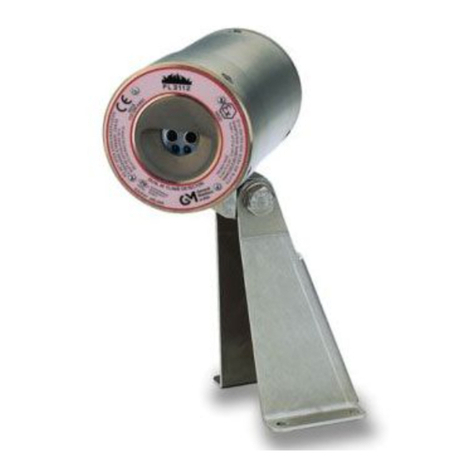
General Monitors
General Monitors FL3112 User manual

General Monitors
General Monitors IR5500 User manual
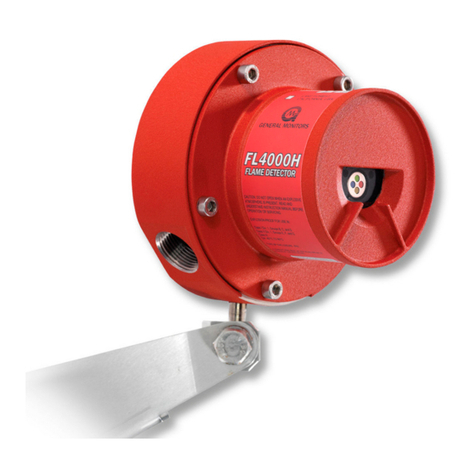
General Monitors
General Monitors FL4000H User manual
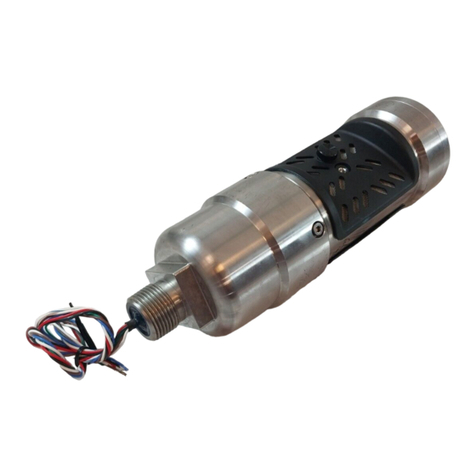
General Monitors
General Monitors IR400 User manual
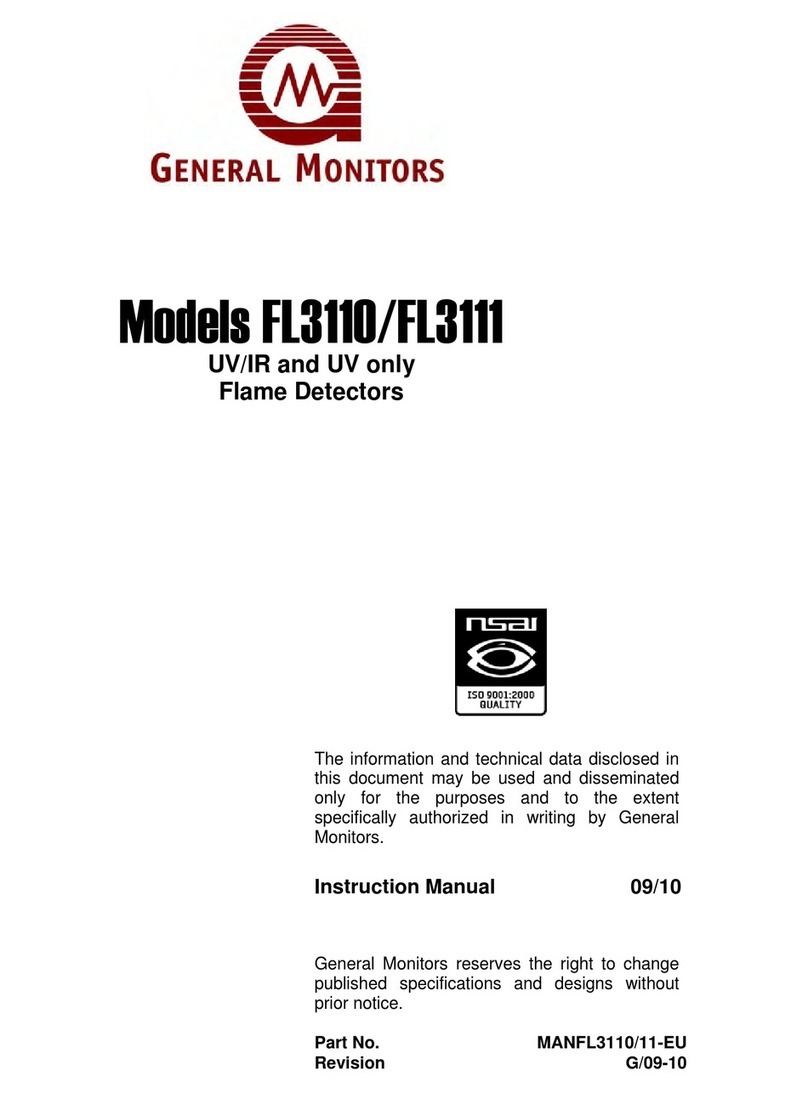
General Monitors
General Monitors FL3110 User manual

General Monitors
General Monitors IR5500 Operating instructions
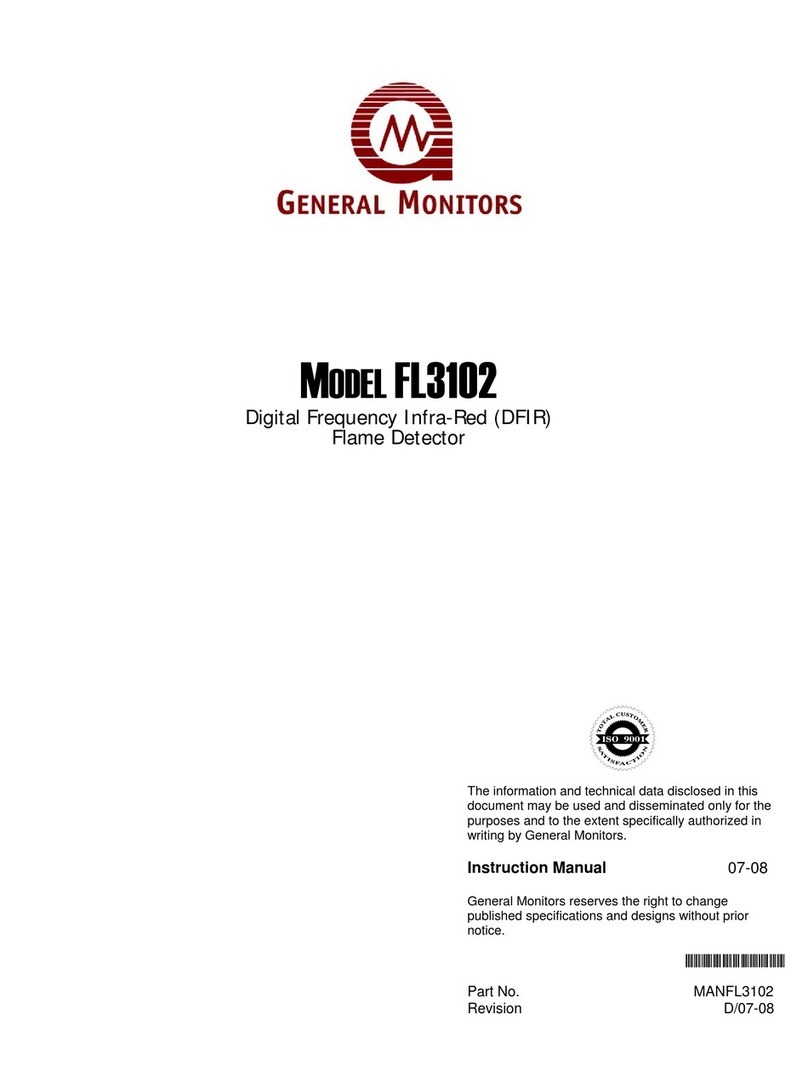
General Monitors
General Monitors FL3102 User manual

General Monitors
General Monitors TS4000 User manual

General Monitors
General Monitors FL4000 User manual
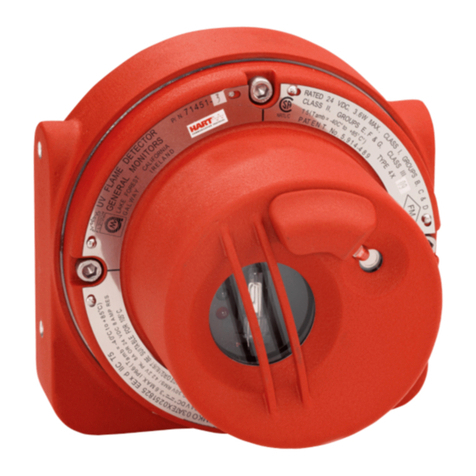
General Monitors
General Monitors FL3100 User manual
